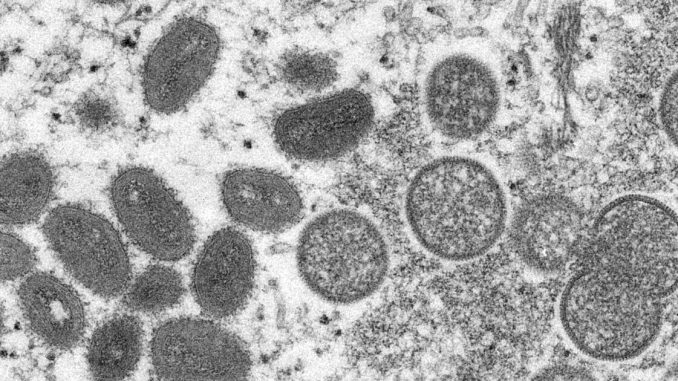Advertisement

HELENA – State health officials are reporting that the monkeypox virus has arrived in Montana.
The Montana Department of Public Health and Human Services (DPHHS) and the Flathead City-County Health Department today confirmed a single suspected case of monkeypox virus infection in an adult from Flathead County.
Initial testing was completed Friday at the Montana State Public Health Laboratory, and confirmatory testing with the Centers for Disease Control and Prevention (CDC) will be conducted next, according to DPHHS.
DPHHS officials explain in a news release that the department is “working closely with local public health and the patient’s healthcare provider to identify individuals who may have been in contact with the patient while they were infectious.”
The patient did not require hospitalization and is now in home isolation. To protect patient confidentiality, no further details about the patient are disclosed.
As of August 4, 2022, the CDC reports 7,102 cases of monkeypox/orthopoxvirus in 48 other US states. In recent months, more than 26,519 cases have been reported in 81 countries where the disease is not normally reported.
Symptoms of monkeypox can include fever, headache, muscle and back pain, swollen lymph nodes, chills, fatigue, and a rash that can look like pimples or blisters that appear on the face, mouth, and other parts of the body.
The illness usually lasts two to four weeks, and most people get better on their own without treatment. Sometimes, monkeypox can cause scarring from the wounds, the development of secondary infections such as pneumonia, or other complications.
The virus does not spread easily between people with casual contact, but transmission can occur through contact with infectious wounds and body fluids; contaminated items such as clothing or bedding; or by respiratory droplets associated with prolonged face-to-face contact.
“Early recognition of the characteristic monkeypox rash by patients and physicians is necessary to minimize transmission of this virus,” said Dr. Maggie Cook-Shimanek, Acting Medical Officer of the DPHHS. “Anyone with symptoms of monkeypox should isolate themselves from others and seek immediate medical attention.”
Because transmission of monkeypox requires close and prolonged contact, tightly knit social networks are particularly affected.
There is no treatment specifically for monkeypox. However, because monkeypox and smallpox viruses are closely related, antiviral drugs (such as tecovirimat) and vaccines designed to protect against smallpox can be used to prevent and treat monkeypox virus infections. The need for treatment depends on how sick someone becomes or whether they are likely to become seriously ill.
DPHHS is unveiling a state shipment of tecovirimat for use when needed, the release said. CDC does not currently recommend widespread monkeypox vaccination. However, vaccination may be recommended for some people who have been exposed to the monkeypox virus.
According to the CDC, the monkeypox virus spreads primarily through close, intimate contact with someone who has monkeypox.
Montanans can take steps to prevent monkeypox. Anyone with a rash that looks like monkeypox should talk to their doctor, even if they don’t think they’ve been in contact with someone who has monkeypox.
A person who has monkeypox should isolate at home. If they have an active rash or other symptoms, they should be kept in a separate room or area from other family members and pets if possible.
To learn more about this virus, visit the CDC website at https://www.cdc.gov/poxvirus/monkeypox/. DPHHS has also launched a new Monkeypox website at monkeypox (mt.gov).

